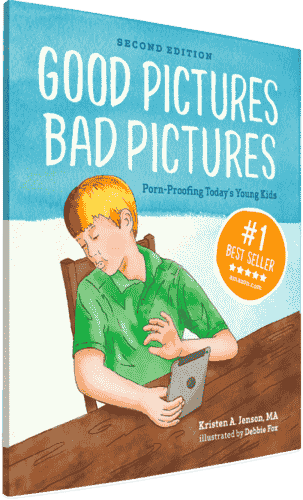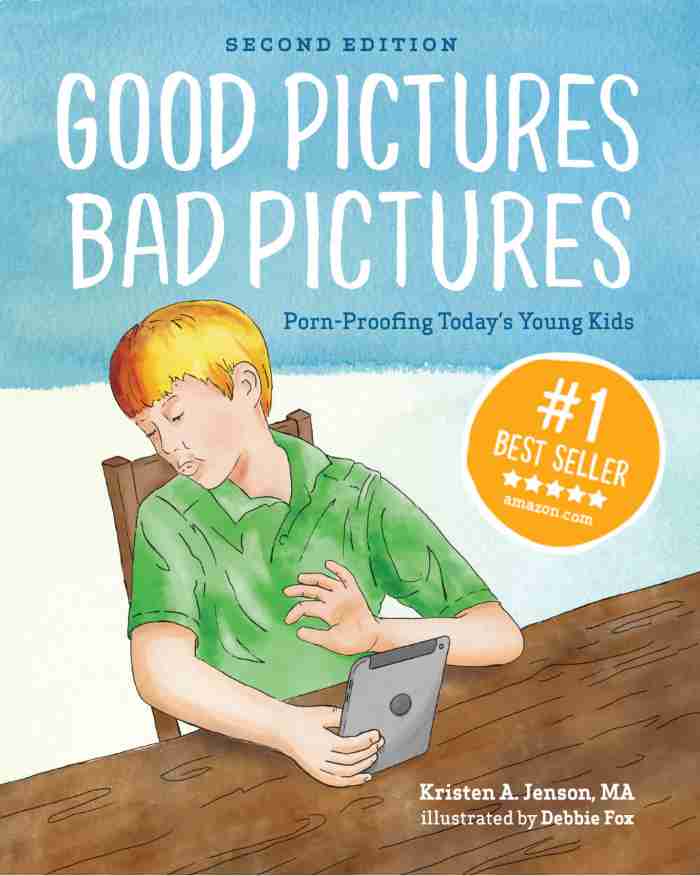

The 3 Big Red Flags of Sexual Abuse
This article was originally published on April 7, 2016 and was updated on April 14, 2023.
We all pay attention to red. Red means STOP. Red means DANGER. A red flag is a warning sign.
When it comes to sexual abuse, there are 3 big red flags which kids should learn to watch for. These are tactics abusers use to convince a child to break body safety rules. If someone is using these tactics on a child, it is a sign the child needs to get help from a trusted adult.

Note: Teaching kids to watch for red flags is NOT intended to place the responsibility of abuse prevention on the child. Child abuse is NEVER the fault of a child. The red flag conversation is intended to prepare a child for situations that a child may face, help the child recognize danger (ideally before abuse takes place), and let the child know who they can turn to if they are in danger.
Define body safety boundaries
Before kids can understand how to identify red flags, kids need to learn body safety boundaries. It is essential that parents teach young children that some parts of the body are private.
For boys the parts of the body that are beneath underwear are private; for girls, the parts that are under underwear and an undershirt are private. There are many good reasons for parents to use clinical names for private body parts.
Kids need to be taught there are special rules for private body parts: there are only a few people (such as a parent, caregiver, or doctor) who should see or touch private areas of their body. The special rules will depend on the age and needs of a child, but the rules should be clear. Children should know that no one should ask them to keep a secret about anything that involves the private areas of anyone's body.
Related: Are Your Kids Safe from Abuse in Sports? 3 Questions Every Parent Should Ask
[[CTA]]
The 3 big red flags you want your kids to know
Big Red Flag #1: Bribes
A person might offer a reward (such as money, toys, treats or something else) for doing something that violates a body safety boundary. These are examples of bribes that can lure children and keep them engaged:
“If you touch my private parts, I will give you candy.”
“If you show me your private parts, I will be your best friend.”
“If you do this I will give you money.”
“If you keep this secret, I will buy you things.”
“If you keep this secret I will be your best friend.”
“If you keep this secret you will be special to me.”
Big Red Flag #2: Threats
A person might scare a child by threatening to take something good away or do something bad if the child won’t cooperate or the child won’t keep a secret. These are common examples of threats:
“If you tell, I am not going to be your friend.”
“If you tell, nobody will believe you.”
“If you tell, It will make your parents mad because you wanted to do it.”
“If you tell, I am going to hurt you or hurt your family.”
“I will tell my mom it was your idea.”
Big Red Flag #3: Normalizing Abuse
A person might try to manipulate a child into believing body safety boundaries are not really important and that most people do not obey body safety rules. To make safety rules seem unusual and sexual acts seem normal, an abuser may try to show a child pornography. BIG RED FLAG! An abuser may also use statements like these:
“All the cool kids do this. It’s no big deal.”
“It’s just a game that feels good.”
“It will be our little secret. It’s okay as long as no one finds out.”
Related: 7 Tactics a Child Predator Uses to Lure Kids: Red Flag Phrases Every Parent Needs to Know
3 key points about red flag tactics
- Children should be taught that any of these red flag tactics could come from an adult or from another child. Child-on-child abuse is skyrocketing and it’s important for children to know that red flag tactics could be used by someone their age. These tactics might even be used by someone they know and like!
- When a person uses red flag tactics, it is a sign that person needs help. If they don’t get help, they might continue to bribe, threaten, and normalize abuse. Children can learn that telling a trusted adult is not only the best way to get abuse to stop, it is the best way to get help for the abuser. This knowledge can make it easier for a child to disclose abuse, especially if the abuser is a friend or family member.
- Kids need to have a firm understanding that secrets about private parts should never be kept secret! And that it’s never too late to tell. And if something happens, it’s NEVER their fault. Let kids know that if they ever recognize anyone using “red flag” tactics, they should come tell you and that you will always be proud of them, believe them, and help them stay safe.
Helping kids learn to recognize red flag situations and teaching them what to do when they encounter them is a powerful tool in childhood sexual abuse prevention. This post has outlined 3 big red flag tactics abusers often use.
To help you further, I have created a Body Safety Toolkit that you can use to help kids create a body safety plan and begin to practice what to do in potential red flag situations.
Of course, creating a body safety plan cannot prevent all types of child sexual abuse. We re-iterate: Teaching kids to watch for red flags is not intended to place the responsibility of abuse prevention on the child. Child abuse is NEVER the fault of a child. The most important thing parents can do is to help children know they are continually and unconditionally loved.
Most children today are exposed to pornography long before they leave elementary school. Protect Young Minds can help you prepare kids for accidental exposure. Too many kids are caught off guard and the consequences can be tragic. Arm your kids with a plan to reject pornography.
Related: Child Sexual Abuse–5 Things Parents Must Do to Avoid Causing More Trauma



Good Pictures Bad Pictures
"I really like the no-shame approach the author takes. It's so much more than just 'don't watch or look at porn.' It gave my children a real understanding about the brain and its natural response to pornography, how it can affect you if you look at it, and how to be prepared when you do come across it (since, let's face it... it's gonna happen at some point)." -Amazon Review by D.O.








